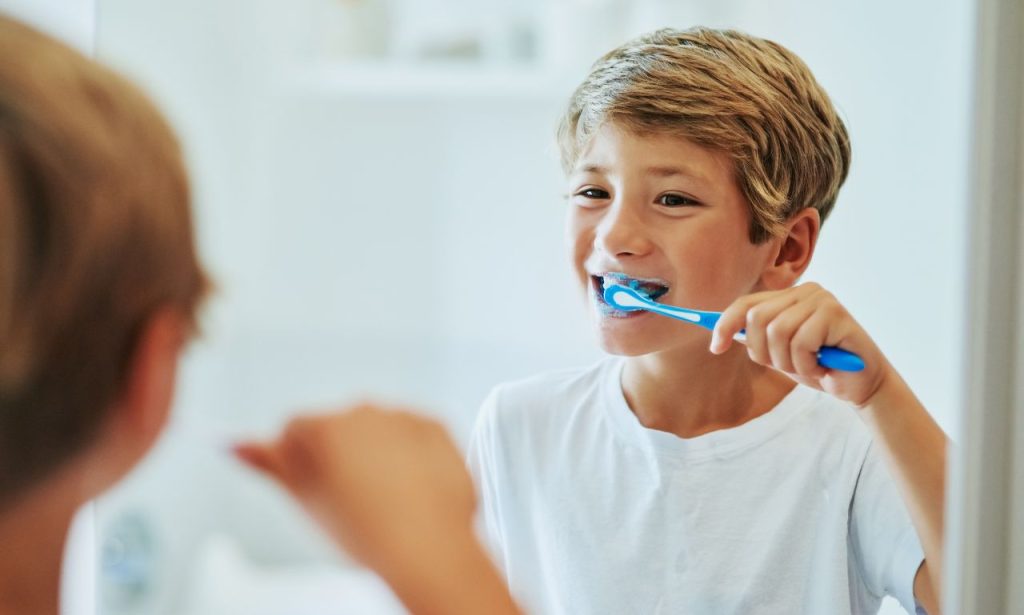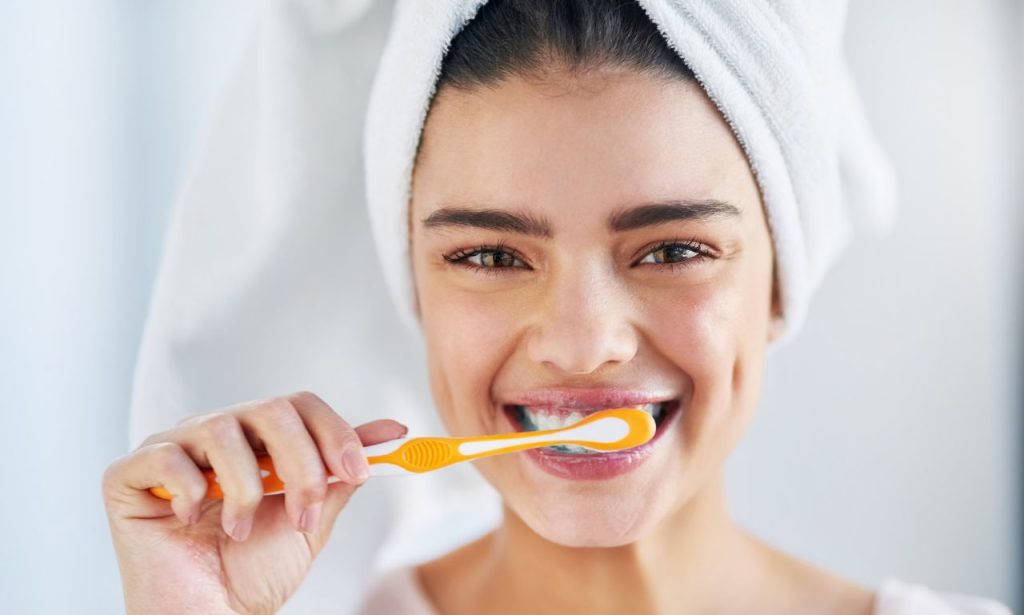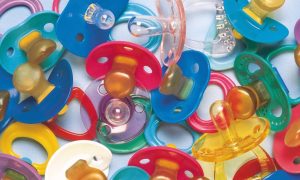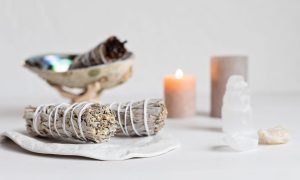When it comes to oral hygiene, most people focus on brushing their teeth. But did you know that brushing your tongue and the roof of your mouth is just as important? These areas can harbor bacteria and fungi that contribute to bad breath and other oral health issues. Let’s dive into why and how you should keep these often-overlooked areas clean.
Understanding the Importance of Comprehensive Oral Hygiene
The mouth is a complex ecosystem, home to hundreds of species of bacteria. While brushing your teeth helps maintain oral health, many people overlook other critical areas like the tongue, the roof of the mouth, and even the cheeks. These surfaces can harbor harmful bacteria, fungi, and food particles that lead to various oral health issues if not cleaned properly.
Comprehensive oral hygiene means going beyond the basics of brushing your teeth. It means tackling every part of the oral cavity to create an environment that minimizes the growth of odor-causing bacteria, prevents oral disease, and keeps the mouth healthy. Here’s why this matters and how you can achieve it.
The Impact of Bacteria on Oral Health
The mouth is a moist environment that, without regular cleaning, provides a perfect surface for bacteria to thrive. Lack of saliva, which has natural antibacterial properties, or insufficient saliva production can exacerbate the buildup of bacteria on soft surfaces like the tongue, roof of the mouth, and cheeks. This bacterial buildup can cause bad breath, oral infections, and even contribute to the development of more severe conditions like tooth decay and gum disease.
Here are some specific issues that arise when parts of the mouth other than the teeth are neglected:
- Bad Breath (Halitosis): Odor-causing bacteria, mainly residing on the tongue and roof of the mouth, release compounds that result in bad breath.
- Oral Infections: Bacteria accumulation on the tongue or roof can lead to infections such as thrush, an overgrowth of the candida fungus, which appears as white patches and can cause discomfort.
- Black Hairy Tongue: This condition is caused by bacteria and food buildup, leading to a blackened, hairy appearance of the tongue.
To prevent these conditions and ensure optimal oral health, it’s essential to address every surface of the oral cavity in your hygiene routine.
Brushing Your Tongue

Your tongue is one of the primary habitats for harmful bacteria in your mouth. Due to its rough surface, it easily traps food particles, dead cells, and bacteria, which can lead to several issues. Here’s why brushing your tongue should be a non-negotiable part of your oral health routine.
The Benefits of Tongue Brushing
- Bad Breath Prevention: The majority of bad breath originates from bacteria on the tongue. Removing these bacteria can significantly improve your breath and reduce odors.
- Thrush Prevention: Keeping the tongue clean helps to prevent the overgrowth of candida fungus, which can cause thrush.
- Improved Taste Sensation: Cleaning your tongue helps remove residue that may dull your sense of taste, allowing you to enjoy your food more fully.
How to Properly Brush Your Tongue
To effectively clean your tongue, follow these steps:
- Use a Soft-Bristled Brush or Tongue Scraper: You can use either a regular toothbrush or a tongue scraper. Both are effective at removing bacteria, but a scraper might feel less invasive for those with a sensitive gag reflex.
- Start at the Back: Start at the back of your tongue and gently move forward, removing as much buildup as possible.
- Use Gentle Pressure: Don’t apply too much pressure; instead, use gentle strokes to avoid irritation.
- Rinse After Brushing: Rinse your mouth and scraper or toothbrush thoroughly after brushing your tongue to remove debris.
For best results, brush your tongue every time you brush your teeth—at least twice a day.
Brushing the Roof of Your Mouth
Just like the tongue, the roof of your mouth (or the palate) is often ignored during oral hygiene routines. The soft palate, located toward the back of your mouth, and the hard palate toward the front, can also harbor harmful bacteria and fungi that can lead to oral health problems.
Why You Should Brush the Roof of Your Mouth
- Prevent Bad Breath: Bacteria present on the roof of your mouth can contribute to halitosis. Regular cleaning keeps this area fresh and reduces odor.
- Avoid Oral Infections: The palate can also be a breeding ground for candida fungus, contributing to conditions like thrush if not cleaned regularly.
- Overall Health: Keeping all areas of the oral cavity clean, including the roof of the mouth, helps maintain a balanced oral microbiome, reducing the risk of oral disease.
How to Properly Clean the Roof of Your Mouth
- Use a Soft Brush: A soft-bristled toothbrush is recommended for this area, as the roof of your mouth is sensitive.
- Be Gentle: Gently brush from the front to the back, making sure not to press too hard.
- Include in Your Routine: Clean the roof of your mouth every time you brush your teeth to maintain overall oral health.
Selecting the Right Tools for Effective Oral Hygiene
To achieve cleaner teeth and a healthy mouth, selecting the right tools is essential. There are many options when it comes to toothbrushes, toothpaste, and tongue scrapers. Let’s go over how to make the best choices for your oral health journey.
Toothbrush Selection
- Type of Brush: Choose a soft-bristled toothbrush if you have sensitive teeth or gums. For those who prefer a deeper clean, a medium bristle is acceptable, but hard bristles should generally be avoided as they can damage tooth enamel and irritate gums.
- Electric vs. Manual Toothbrush: Electric toothbrushes can make brushing easier, especially for those with limited mobility or anyone looking for an efficient clean. Look for toothbrushes with features like a built-in timer or alerts to help ensure thorough brushing.
- Replace Regularly: Replace your toothbrush or toothbrush head every three months, or sooner if the bristles become splayed.
Tongue Scrapers and Their Benefits
- Targeted Cleaning: Tongue scrapers are designed specifically to remove bacteria and buildup from the tongue effectively.
- Comfortable Option: Some individuals find scrapers more comfortable than a toothbrush, especially if they have a sensitive gag reflex.
- Added Benefit for Fresh Breath: Using a tongue scraper can be more efficient in reducing bad breath compared to using just a toothbrush.
The Correct Brushing Technique

Using the right technique to clean your teeth, tongue, and other parts of your mouth is crucial for maintaining dental health and preventing oral issues. Here is a step-by-step guide to ensure you’re brushing correctly and comprehensively.
- Use Fluoride Toothpaste: Choose a fluoride toothpaste for its benefits in preventing tooth decay. Fluoride strengthens tooth enamel and helps protect against cavities.
- Brush for Two Minutes: Divide the time into four sections of 30 seconds each—upper left, upper right, lower left, and lower right—and spend an equal amount of time on each.
- 45-Degree Angle: Place your toothbrush at a 45-degree angle to the gum line and brush in gentle, circular motions. This angle helps remove plaque and food particles more effectively.
- Brush Every Surface: Brush all surfaces—outer, inner, and chewing—to remove buildup of bacteria and food debris.
- Gentle Sweeping Motion: Use a sweeping motion away from the gums to prevent gum irritation and to remove particles effectively.
- Brush the Tongue and Roof of Your Mouth: Spend extra time brushing these areas to prevent the buildup of odor-causing bacteria.
- Rinse Thoroughly: Rinse your mouth and your toothbrush with water to remove any leftover residue.
Tips for an Effective Oral Hygiene Routine
- Brush Twice a Day: Brush your teeth, tongue, and roof of your mouth twice a day to reduce bacterial buildup and maintain oral health.
- Floss Daily: Flossing helps remove food particles stuck between teeth that brushing alone may not reach.
- Use Mouthwash for Added Freshness: A fluoride or antibacterial mouthwash can help reduce bad bacteria and maintain fresh breath, but it shouldn’t replace brushing.
The Role of Regular Dental Visits
Maintaining good home oral hygiene is essential, but professional cleanings are also important. Visit your dentist twice a year to remove plaque and tartar buildup that can lead to gum disease.
Comparing Oral Hygiene Practices
| Technique | Benefits | Recommendations |
|---|---|---|
| Brushing Teeth | Removes plaque, prevents cavities | Brush twice daily with fluoride toothpaste |
| Brushing Tongue | Reduces bad breath, prevents thrush | Brush gently once daily |
| Brushing Roof | Reduces bad breath, prevents thrush | Brush gently once daily |
| Regular Dental Visits | Removes plaque and tartar, monitors oral health | Visit twice yearly |
The Role of Saliva in Oral Health
Saliva is crucial for maintaining a healthy oral environment. It helps wash away food particles, neutralizes acids produced by bacteria, and aids in the initial stages of digestion. Insufficient saliva production, known as dry mouth, can lead to the rapid buildup of harmful bacteria and increase the risk of oral infections and cavities.
Tips to Boost Saliva Production
- Stay Hydrated: Drink plenty of water throughout the day to stay hydrated and promote saliva production.
- Chew Sugar-Free Gum: Chewing sugar-free gum stimulates the saliva glands, increasing saliva flow.
- Avoid Mouth-Drying Habits: Avoid smoking, alcohol, and caffeine, as they can reduce saliva production.
Professional Dental Care
While maintaining a good oral hygiene routine at home is critical, it is equally important to have regular dental exams to monitor your overall oral health.
The Importance of Dental Visits
- Prevent Advanced Disease: Dental professionals can detect early signs of issues like gum disease, tooth decay, and oral infections before they become advanced and difficult to treat.
- Professional Cleanings: Even with perfect home care, plaque can harden into tartar, which only a dental professional can remove. Regular cleanings are key for the complete removal of plaque and maintaining an excellent condition of the teeth and gums.
How Often to Visit the Dentist
- Twice a Year: It is recommended to visit your dentist twice a year for professional cleanings and checkups.
- Additional Visits if Needed: If you experience symptoms such as swollen palate, bleeding gums, or mouth ulcers, it’s crucial to seek medical attention sooner rather than later.
Addressing Common Concerns about Brushing More than Just Your Teeth
How to Maintaining a Balanced Oral Health Regimen

Comprehensive oral hygiene is about more than brushing your teeth—it requires attention to every surface in your mouth. By adopting these practices, you’ll be able to:
- Reduce bad breath and maintain fresh breath throughout the day.
- Prevent oral infections like thrush.
- Lower the risk of tooth decay, gum disease, and other oral health problems.
An effective oral health routine includes using the right tools, adopting the correct brushing techniques, maintaining regular dental appointments, and addressing the often-overlooked areas like the tongue and roof of your mouth.
Don’t settle for “good enough” when it comes to oral hygiene. Take proactive steps to ensure that your entire mouth is as clean and healthy as possible, keeping harmful bacteria at bay and contributing to your overall health.
Conclusion
Comprehensive oral hygiene involves more than just brushing your teeth. By including your tongue and the roof of your mouth in your daily routine, you can prevent bad breath, thrush, and other oral health issues. Remember to choose a toothbrush that you will use consistently, brush with the right technique, and visit your dentist regularly.
ALSO READ: Profitable Things To Sell At School (That Aren’t Food)
FAQs
Ideally, every time you brush your teeth (twice a day). But even brushing them once a day can make a big difference.
Mouthwash can help, but it’s not a substitute for physically removing buildup with a toothbrush or tongue scraper.
Start slowly and work your way back gradually. You can also try a tongue scraper, which may be more comfortable than a brush.




